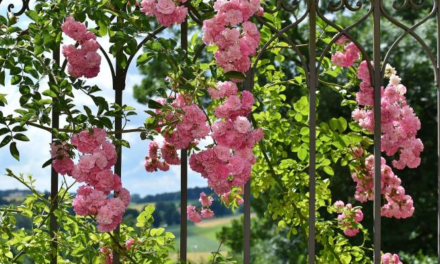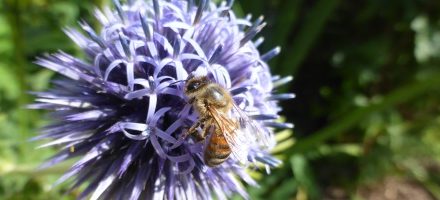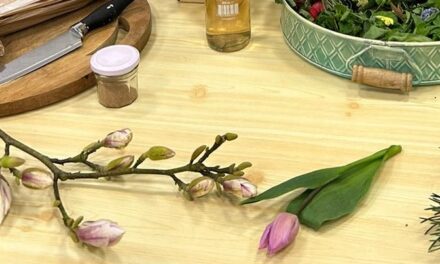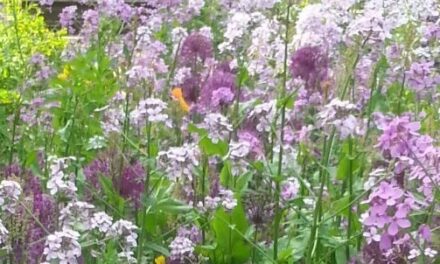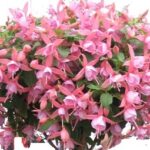ABUNDANCE AND HOW TO HAVE IT
On 26 July Orleton and District Gardening Club were delighted to welcome Toby Buckland, gardening writer and presenter, our celebrity speaker for 2022 to give a talk entitled Abundance and How to Have it.
 Garden designer, Toby said, rely on combining soft and spiky textures as the basis for making gardens look good all the year round – but visual, not tactile, texture. For example, pheasant grass is soft to the touch but has a spiky outline; conversely gorse feels spiny but has a soft, rounded outline. Emphasis on plants with different foliage textures makes a garden look good all year and creates a feeling of luxuriance.
Garden designer, Toby said, rely on combining soft and spiky textures as the basis for making gardens look good all the year round – but visual, not tactile, texture. For example, pheasant grass is soft to the touch but has a spiky outline; conversely gorse feels spiny but has a soft, rounded outline. Emphasis on plants with different foliage textures makes a garden look good all year and creates a feeling of luxuriance.
Using plants from the opposite end of the colour spectrum is a useful design tool, for example yellow and blue. Purple foliage acts as a frame for paler colours, white Astrantia looks good against Sambucus Black Lace. Plants are designed to live in communities where contrast occurs naturally.
Growing prolific self seeders is an effortless way of achieving abundance. Purple Atriplex and bronze Fennel with their upright habit will self seed and form useful contrast in ornamental and vegetable gardens. Cyclamen hederifolium will seed about, the seeds helpfully transported by ants and Agapanthus are easy, seeds sprinkled into cracks in paving will germinate readily. Many plants will show increased hardiness when successive generations are grown in local areas, such as Echiums, a biennial from the Canaries, each plant containing 60,000 seeds.
The growing season is some three weeks longer due to climate change and gardeners can take advantage by growing late season plants such as Persicaria, Rudbeckia, Asters, Dahlias and Tithonias to achieve more abundance over a longer period of time. At the other end of the gardening year Toby suggested growing early flowering bulbs to bring the garden to life. As he pointed out even weeds look good in May!
Containers can be used to create a tapestry of plants, Toby is particularly fond of Heucheras with their colourful foliage. Annual climbers are useful in creating another layer of colour. An area of lawn set aside as a wildflower meadow creates a sense of abundance as well as being beneficial to pollinators.
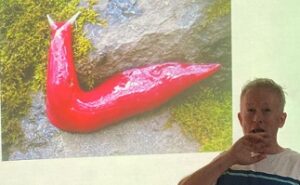 Toby warned that he may digress from his topic and digress he did! We learned about a cough linctus derived from simmering red slugs in sugar and an attempt to grow barley for brewing in an allotment which would have resulted in beer at £500 a pint!
Toby warned that he may digress from his topic and digress he did! We learned about a cough linctus derived from simmering red slugs in sugar and an attempt to grow barley for brewing in an allotment which would have resulted in beer at £500 a pint!
A very engaging speaker, Toby’s blend of humour and information ensured the club enjoyed an instructive and highly entertaining evening.
Ghislaine Arundale

